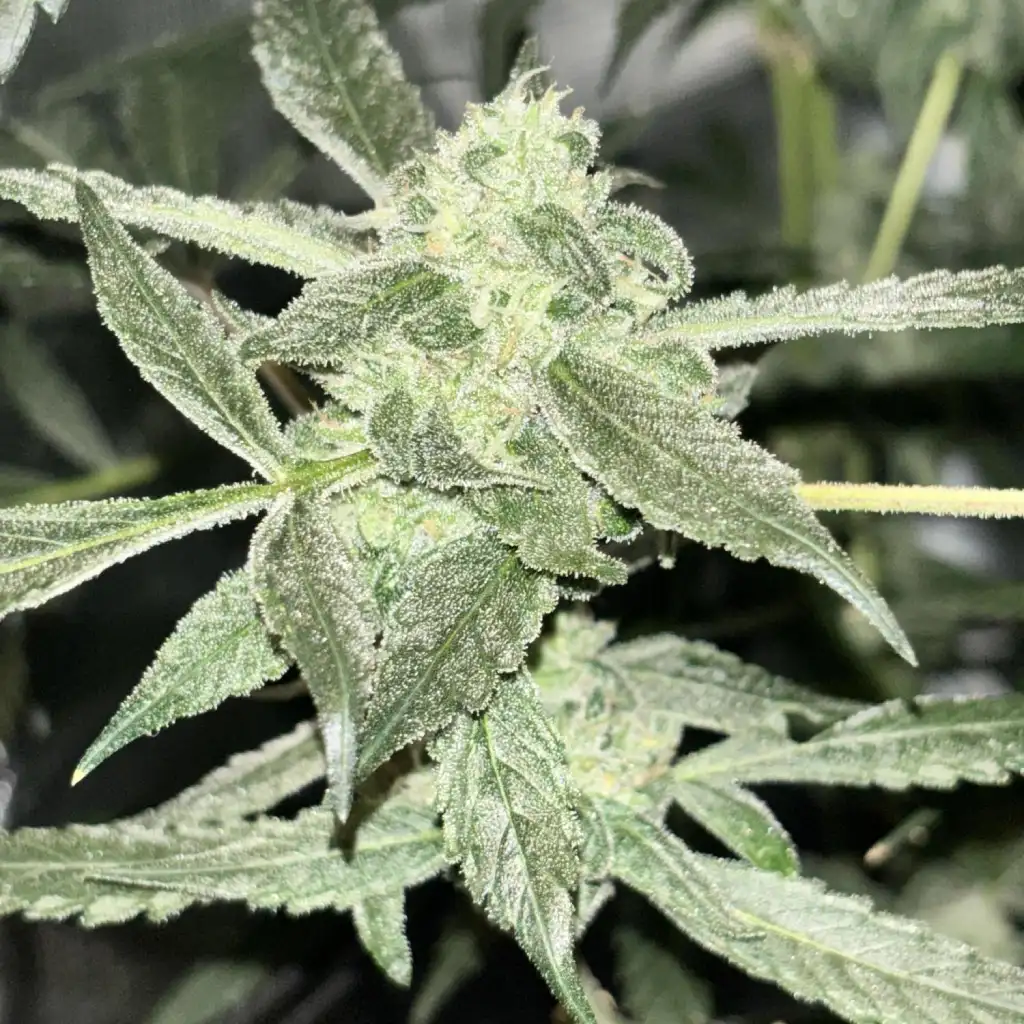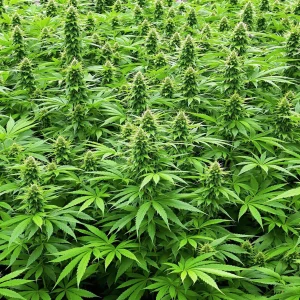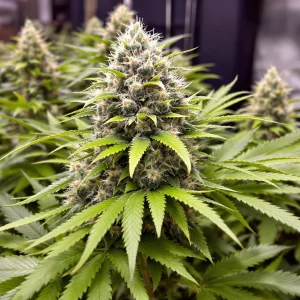Fullgas Strain Description
Fullgas is a remarkable hybrid cannabis strain known for its potent effects and unmistakable aroma. Its rich terpene profile delivers bold notes of diesel, citrus, and earthy undertones, creating a unique sensory experience. The strain’s dense, resin-coated buds are a testament to its high potency, making it a favorite for recreational and medicinal users seeking a balance of euphoria and relaxation. With THC levels ranging from 22-28%, Fullgas is particularly appealing to seasoned consumers looking for a powerful strain with a well-rounded effect.
Its balanced genetics combine the uplifting, cerebral high of Sativa with the calming body effects of Indica. This makes Fullgas versatile for day or evening use, depending on dosage. Its ability to provide a deeply relaxing experience without overly sedating effects has cemented its status among top-tier hybrid strains.
Environmental Requirements for Growing Fullgas Strain
Creating the right environment is essential for cultivating Fullgas successfully. This strain thrives in controlled conditions with temperatures of 68-80°F during vegetative growth. Lowering the temperature slightly during flowering helps enhance resin production, giving the buds their signature potency. Humidity should remain at 60-70% during early growth and drop to 40-50% in the flowering stage to avoid mold.
Good airflow is equally critical for maintaining healthy plants. Using fans and proper ventilation reduces the risk of mildew and other issues. Fullgas is sensitive to extreme fluctuations, so stable conditions ensure optimal growth and maximum yields.
Setting Up the Growing Cannabis Space for Fullgas Strain
Setting up a dedicated growing space is vital for achieving the best results with Fullgas. Indoors, a grow tent with reflective walls ensures even light distribution and better temperature regulation. Use full-spectrum LED grow lights to mimic natural sunlight and adjust the height as the plant matures.
Ventilation is crucial to control the strain’s strong odor and prevent air stagnation. Carbon filters or odor-neutralizing gels are excellent additions to manage Fullgas’s pungent diesel aroma. Consistent environmental control will maximize both quality and yield.
Indoor Cannabis Cultivation
Growing Fullgas indoors gives cultivators greater control over light, temperature, and humidity. High-quality soil or hydroponic systems work well, and a lighting schedule of 18/6 for vegetation and 12/12 for flowering optimizes growth. Training methods like topping and LST create an even canopy for higher light exposure.
Outdoor Cannabis Cultivation
Outdoors, Fullgas thrives in warm, sunny climates similar to the Mediterranean. Direct sunlight for 8+ hours daily and nutrient-rich soil are key. Protect the plants from pests and excess moisture, as the dense buds are mold-prone. Harvest typically occurs in late September to early October.
Propagation and Germination of Fullgas Strain
High-quality seeds or clones are essential for propagating Fullgas. Germinate seeds using the paper towel method or plant them in a seedling starter medium. Maintain temperatures around 75°F and keep the growing medium moist but not waterlogged for successful germination.
Cloning is another reliable method to propagate Fullgas. Clones preserve the parent plant’s genetics, ensuring consistent potency and growth patterns. Once germinated or rooted, transplant into larger containers with nutrient-rich soil to encourage healthy development.
Vegetative Phase of Fullgas Strain
During the vegetative phase, Fullgas requires ample nutrients, light, and water to establish strong roots and foliage. Use a nitrogen-rich nutrient mix and monitor the pH, keeping it between 6.0-6.5 in soil or 5.5-6.0 in hydroponics. Adequate lighting is critical during this stage, with at least 18 hours of light daily.
Training techniques like topping and LST are highly effective during this phase. These methods help direct the plant’s energy into multiple colas, optimizing light penetration and increasing the potential yield. Consistent care during vegetative growth sets the foundation for a successful harvest.
Flowering Phase of Fullgas Strain
Fullgas transitions to the flowering phase after 8-10 weeks of vegetative growth. During this period, reduce humidity to 40-50% to prevent mold, and increase phosphorus and potassium levels in the nutrient feed. The buds develop their dense structure and resinous coating, accompanied by the strain’s signature diesel aroma.
Monitor trichomes to determine the perfect harvest window. When they turn milky with some amber hues, it signals peak potency. Proper attention during flowering ensures Fullgas reaches its full potential in terms of flavor, aroma, and THC content.
Cannabis Fertilization and Nutrition – Fullgas Strain
Feeding Fullgas requires a balanced nutrient regimen. During the vegetative stage, prioritize nitrogen for robust growth. Transition to phosphorus- and potassium-rich nutrients in flowering to support bud development. Organic fertilizers enhance terpene production, improving the strain’s flavor and aroma.
Maintain consistent calcium and magnesium levels to prevent deficiencies. Watch for signs of nutrient imbalances, such as yellowing leaves or slow growth, and adjust feeding schedules accordingly. A well-balanced diet ensures Fullgas delivers exceptional yields and quality.
Pest and Disease Control for Cannabis Growing
Prevention
A clean and well-maintained environment is the first defense against pests and diseases. Sticky traps and beneficial insects like ladybugs help control common pests. Proper airflow reduces the risk of mold and mildew, ensuring healthy growth.
Corrective Actions
If pests or diseases are detected, neem oil or insecticidal soap can effectively manage infestations. For mold, promptly remove affected areas and adjust humidity. Quick intervention minimizes damage and keeps plants thriving.
Harvesting and Curing for Cannabis Growing
Harvest Fullgas when trichomes are mostly milky with some amber, indicating peak potency. Cut branches and hang them in a dark, ventilated space at 70°F and 50% humidity for even drying. Cure buds in airtight jars, opening daily for the first week to release moisture and enhance flavor.
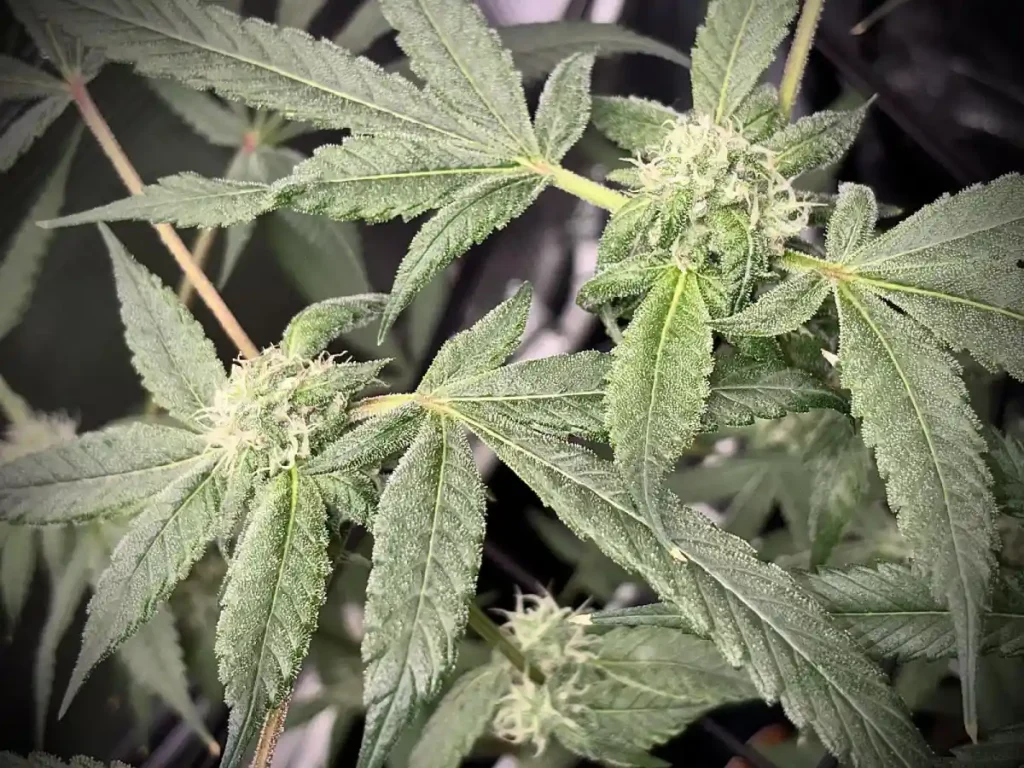
Week-by-Week Growth Plan for Fullgas Strain
Week 1-2: Germination
Begin by germinating seeds using the paper towel method or directly in seedling starter kits. Ensure the environment remains moist, with temperatures stabilized at around 75°F (24°C). Maintain humidity at 70% and provide a gentle light source such as CFLs or dimmed LEDs to encourage sprouting without overwhelming the fragile seedlings.
Monitor the seeds closely for taproot emergence, which usually takes 3-7 days. Once roots appear, transfer the germinated seeds into small pots filled with a light, nutrient-rich growing medium. Keep the soil consistently moist but not waterlogged, as excess water can inhibit germination success.
Week 3-4: Seedling Stage
Transplant seedlings into larger containers to give their roots ample space to expand. Provide an 18/6 light schedule with moderate-intensity grow lights to encourage strong leaf and stem development. Maintain temperatures between 70-77°F (21-25°C) and a humidity level of 65-70% to support healthy growth.
Begin light feeding with seedling-specific nutrients, ensuring you don’t over-fertilize. Water sparingly but consistently, checking that the top inch of the soil dries out before the next watering. Proper ventilation is crucial during this stage to prevent mold and strengthen stems.
Week 5-7: Vegetative Growth
During this vigorous growth phase, focus on providing nitrogen-rich nutrients to promote leafy development. Keep the 18/6 light cycle and maintain temperatures between 72-82°F (22-28°C). Lower humidity slightly to 60% to accommodate the plant’s maturing needs.
Employ training techniques like low-stress training (LST) or topping to shape the plant for better light exposure. Regular pruning of lower leaves and weak branches improves airflow and redirects energy to more productive bud sites. Ensure consistent watering and nutrient feeding, monitoring for any signs of deficiencies or pests.
Week 8-9: Late Vegetative Phase
In this phase, the plant’s growth accelerates, requiring increased feeding with balanced nutrients rich in nitrogen, phosphorus, and potassium. Gradually reduce humidity to 55-60% and maintain temperatures around 75°F (24°C) to prepare for flowering.
Refine your training techniques to manage height and create an even canopy. Ensure the plant is healthy and resilient before transitioning to the flowering stage by checking for pests, deficiencies, or environmental imbalances. Regular inspections and adjustments are essential for optimal growth.
Week 10-13: Early Flowering
Switch to a 12/12 light schedule to induce flowering. Introduce phosphorus-rich nutrients to support bud formation and reduce nitrogen feeding. Keep humidity at 50% and maintain temperatures between 70-78°F (21-26°C).
Monitor bud sites for early development and ensure proper airflow to prevent mold. Carbon filters may be necessary indoors to manage the strain’s potent diesel aroma. Inspect plants regularly for signs of nutrient deficiencies or stress, adjusting feeding schedules accordingly.
Week 14-16: Mid Flowering
Buds thicken, and resin production intensifies during this stage. Lower humidity to 40-50% to reduce the risk of mold and mildew, and maintain steady temperatures between 68-75°F (20-24°C). Support heavy branches with stakes or trellises to prevent snapping under the weight of the buds.
Continue feeding with bloom-specific nutrients, emphasizing phosphorus and potassium. Avoid overwatering, as excess moisture can impact bud quality and increase the risk of mold. Regularly inspect the trichomes, as their development will indicate the plant’s progress toward maturity.
Week 17-18: Late Flowering
Flush plants with plain water for the final two weeks to eliminate nutrient buildup, enhancing the flavor and smoothness of the harvest. Lower humidity to 35-40% and maintain stable temperatures around 70°F (21°C). Monitor trichomes daily for signs of maturity, harvest when trichomes are mostly milky with a few amber.
Carefully manage environmental conditions to preserve the plant’s terpene profile. Any stress during this phase can impact potency and aroma, so maintain vigilance over temperature, humidity, and light intensity.
Week 19: Harvest
Cut the plants at the base and trim larger fan leaves. Hang branches upside down in a dark, well-ventilated space with temperatures around 60-70°F (15-21°C) and humidity at 50%. Allow the buds to dry for 7-10 days, ensuring proper airflow to prevent mold.
Once dried, trim the buds and begin curing in airtight jars. Open the jars daily for the first two weeks to release excess moisture and preserve freshness. A curing period of 2-4 weeks enhances the strain’s potency, flavor, and aroma.
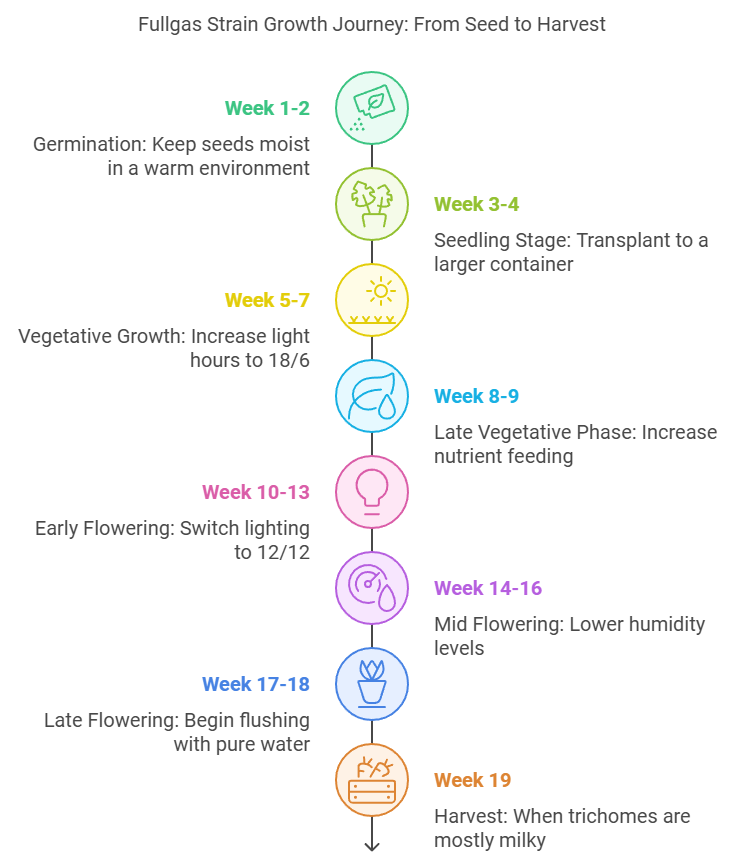
FAQs About Fullgas Strain
What is the THC percentage of Fullgas Strain?
Fullgas contains THC levels ranging between 22-28%, making it one of the more potent strains available. This high THC content delivers a powerful and balanced experience, with effects that range from deep relaxation to euphoric energy. Its potency makes it suitable for experienced users seeking strong therapeutic or recreational effects.
How long does it take for Fullgas Strain to flower?
The flowering phase for Fullgas typically lasts 8-9 weeks when grown indoors under controlled conditions. Outdoor growers can expect a harvest window in late September to early October, depending on the climate. Proper environmental management ensures dense, resin-coated buds during the flowering period.
What flavors and terpenes are present in Fullgas Strain?
Fullgas is characterized by its robust terpene profile, including myrcene, limonene, and caryophyllene. These terpenes contribute to its signature diesel aroma with complementary citrus and earthy undertones. The flavor is bold and intense, appealing to users who enjoy pungent, complex strains.
Can Fullgas Strain be grown both indoors and outdoors?
Yes, Fullgas thrives in both indoor and outdoor settings. Indoor cultivation allows for precise control over environmental factors such as light, humidity, and temperature, which is ideal for maximizing yields. Outdoor growers must manage potential challenges such as pests and unpredictable weather, but the strain’s natural resilience makes it adaptable to various conditions.
What are the medicinal benefits of Fullgas Strain?
Fullgas is highly valued for its medicinal properties. Its relaxing effects make it effective for managing chronic pain, muscle tension, and inflammation. The euphoric uplift it provides can help alleviate stress, anxiety, and depression. Additionally, its sedative qualities make it a suitable option for improving sleep quality in users with insomnia or sleep disorders.

